Introducing the next generation of AirPods: The world’s most popular wireless headphones just got better
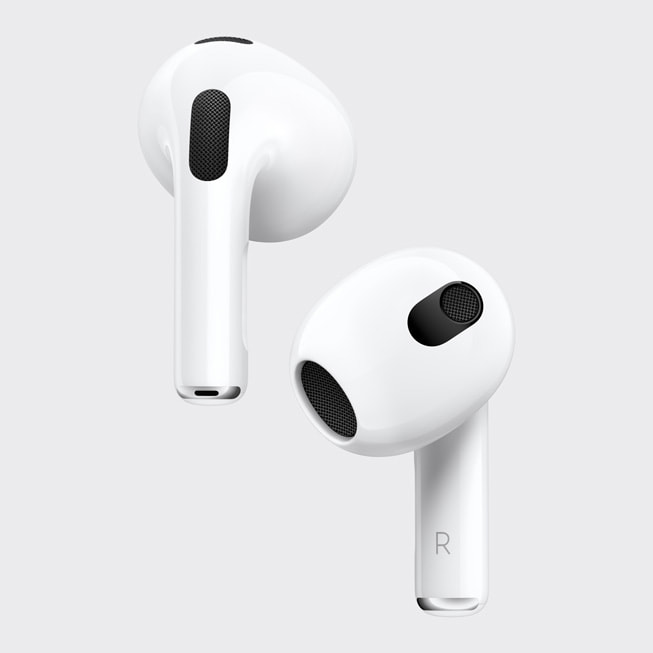
All-New Design

Breakthrough Audio Features
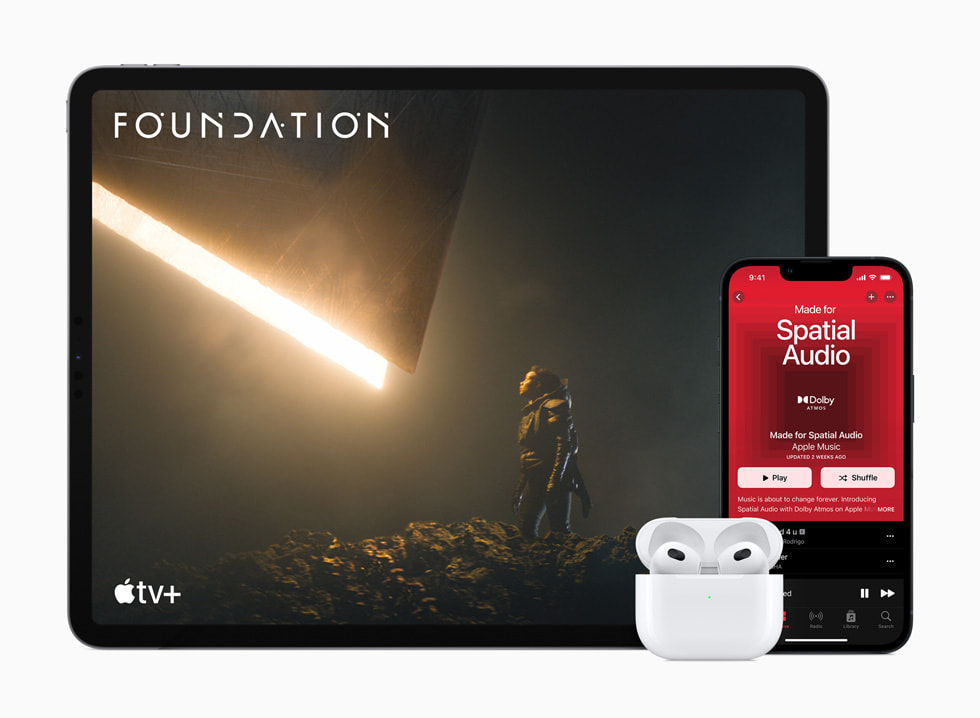
Magical Experience
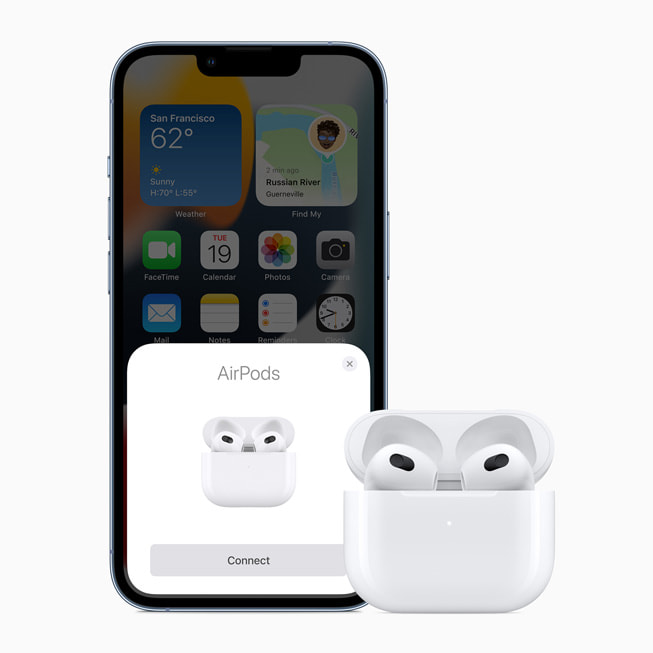
Longer Battery Life
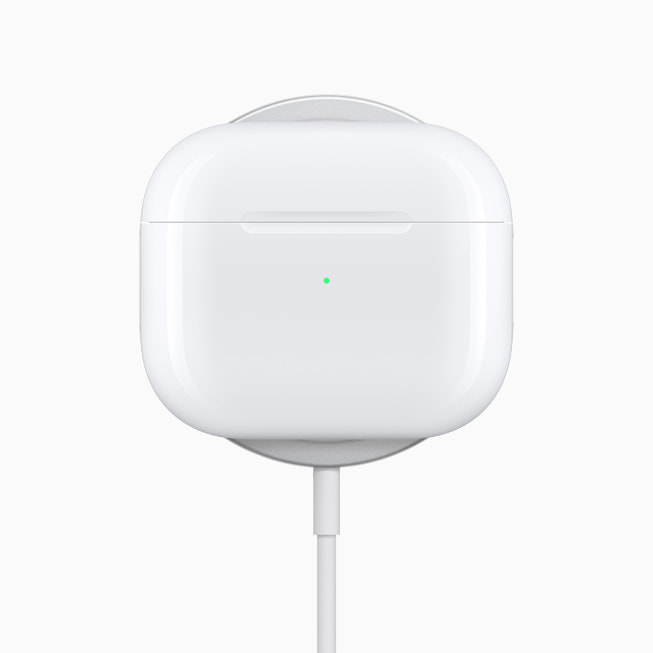
AirPods with iOS and iPadOS
- With spatial audio and dynamic head tracking, voices in a Group FaceTime call sound like they’re coming from the direction in which the person is positioned on the screen, making it seem as if everyone is in the same room. 4
- Announce Notifications allows Siri to read important time-sensitive notifications, including alerts from Messages, Reminders, Calendar, and calls, as well as any third-party apps that adopt the API.
- AirPods are now part of the Find My network of hundreds of millions of iPhone, iPad, and Mac computers around the world, offering proximity view in the Find My app and Lost Mode, as well as separation alerts and sounds.
Apple and the Environment
- AirPods (3rd generation) will be available for $179 (US) and are available to order from apple.com/store and in the Apple Store app in the US and more than 26 other countries and regions starting today, with availability in stores beginning Tuesday, October 26.
- AirPods (2nd generation) will be available at the new price of $129 (US).
- AirPods Pro now come with MagSafe Charging Case for the same price of $249 (US).
- With the Apple Music Voice Plan, users can enjoy millions of songs, playlists, and stations in the Apple Music catalog through Siri. The Apple Music Voice Plan will be available later this fall in select countries and regions for $4.99 (US) per month.
- New subscribers can get Apple Music free for six months with the purchase of any AirPods, AirPods Pro, or AirPods Max. 5
- AirPods require Apple devices running iOS 15.1, iPadOS 15.1, watchOS 8.1, tvOS 15.1, or macOS Monterey, all available as free software updates next week.
- Customers can add personal engraving with emoji, text, and numbers to cases for AirPods Pro, AirPods (3rd generation), and AirPods (2nd generation) for free on apple.com/store and in the Apple Store app.
Text of this article
October 18, 2021
PRESS RELEASE
The new AirPods feature spatial audio and industry-leading sound, longer battery life, and an all-new design
CUPERTINO, CALIFORNIA Apple today announced the third generation of AirPods featuring spatial audio, delivering advanced features and a magical experience in a new contoured design. By combining the power of the H1 chip with an Apple-designed acoustic system, the new AirPods use computational audio to deliver breakthrough sound with Adaptive EQ. Users can enjoy spatial audio featuring Dolby Atmos in Apple Music, movies, and tv shows, along with dynamic head tracking, across Apple devices. The new AirPods are resistant to sweat and water, and feature a force sensor for easy and intuitive control of music and phone calls. The extended battery life enables up to six hours of listening time 1 and up to 30 hours of total listening time with the convenient charging case. AirPods (3rd generation) join the world’s most popular family of headphones and are available to order starting today, and in stores beginning Tuesday, October 26.
“AirPods forever changed wireless headphones with their groundbreaking design, incredible sound, and magical experience,” said Greg Joswiak, Apple’s senior vice president of Worldwide Marketing. “We are excited to introduce the next generation of AirPods, featuring unrivaled sound through Adaptive EQ and spatial audio with dynamic head tracking, along with seamless interaction between Apple devices — making the world’s best-selling headphones even better.”
The new design of AirPods is lightweight and contoured, sitting at just the right angle for comfort and to direct audio into the ear. For a more subtle appearance, the stem is shorter than the previous generation and features the same intuitive force sensor as AirPods Pro for media control. The new AirPods are resistant to both sweat and water, with an IPX4 rating for both the earbuds and the charging case. 2
AirPods (3rd generation) build on the great sound quality that AirPods are known for, starting with a custom driver and a high dynamic range amplifier that together produce powerful bass with crisp, clean high frequencies. The microphone is covered by an acoustic mesh to help reduce the sound of wind, so the speaker’s voice comes across distinctly on calls. AirPods also feature AAC-ELD, a superior speech codec that offers full HD voice quality, providing clear, natural communication for FaceTime calls.
The new AirPods use computational audio to bring the breakthrough experiences that customers love on AirPods Pro and AirPods Max — like Adaptive EQ and spatial audio with dynamic head tracking — to even more people.
For an optimal listening experience with rich detail, the new AirPods feature Adaptive EQ that tunes sound in real time based on how AirPods fit in the user’s ear. An inward-facing microphone monitors for sound, and then Adaptive EQ, powered by computational audio, tunes the low and mid frequencies to account for what may be lost due to variances in fit.
Spatial audio creates a three-dimensional theater-like experience, placing sound virtually anywhere in space, and with Dolby Atmos, AirPods have never sounded better. Users can also enjoy this multi-level experience with dynamic head tracking, so music, video, and even Group FaceTime calls feel more immersive than ever before. Using advanced spatial audio algorithms, and by applying directional audio filters to subtly adjust the frequencies that each ear receives, the new AirPods can place sound all around the user.
With one-touch setup that automatically pairs AirPods with other Apple devices, users can effortlessly enjoy music throughout the day. Audio Sharing allows listeners to share the audio stream between two sets of AirPods, AirPods Pro, or AirPods Max, while using iPhone, iPad, iPod touch, or Apple TV.
A new skin-detect sensor accurately discerns if AirPods are in the ear — versus in a pocket or on a table — and pauses playback when removed. To help with sound clarity, beamforming microphones block out ambient noise and focus on the user’s voice, while users can also enjoy a hands-free experience by simply saying “Hey Siri” for requests.
AirPods (3rd generation) offer an extra hour of battery life over the previous generations, with up to six hours of listening time and up to four hours of talk time. Just five minutes of charging provides about an hour of battery life, and with four additional charges in the case, users can get up to 30 hours of total listening time. 3 AirPods are now also part of the MagSafe ecosystem for convenient wireless charging.
AirPods offer exceptional convenience and sound quality, and with iOS 15 and iPadOS 15, users can enjoy the following features:
AirPods are designed with numerous materials and features to reduce their environmental impact, including the 100 percent recycled rare earth elements used in all magnets. The case also uses 100 percent recycled tin in the solder of the main logic board, and 100 percent recycled aluminum in the hinge. AirPods are also free of potentially harmful substances such as mercury, BFRs, PVC, and beryllium. For energy efficiency, AirPods meet US Department of Energy requirements for battery charger systems. Apple’s Zero Waste program helps suppliers eliminate waste sent to landfills, and all final assembly supplier sites are transitioning to 100 percent renewable energy for Apple production. In the packaging, 100 percent of the virgin wood fiber comes from responsibly managed forests.
Today, Apple is carbon neutral for global corporate operations, and by 2030, plans to have net-zero climate impact across the entire business, which includes manufacturing supply chains and all product life cycles. This means that every Apple device sold, from component manufacturing, assembly, transport, customer use, charging, all the way through recycling and material recovery, will be 100 percent carbon neutral.
Pricing and Availability
About Apple
Apple revolutionized personal technology with the introduction of the Macintosh in 1984. Today, Apple leads the world in innovation with iPhone, iPad, Mac, Apple Watch, and Apple TV. Apple’s five software platforms — iOS, iPadOS, macOS, watchOS, and tvOS — provide seamless experiences across all Apple devices and empower people with breakthrough services including the App Store, Apple Music, Apple Pay, and iCloud. Apple’s more than 100,000 employees are dedicated to making the best products on earth, and to leaving the world better than we found it.
- Five hours of listening time with spatial audio enabled.
- The third-generation AirPods were tested under controlled laboratory conditions and have a rating of IPX4.
- Battery life varies by use. See apple.com/batteries for details.
- Available on iPhone and iPad with A12 Bionic and later, and Mac models (2018 or later).
- New subscribers only. $9.99 per month after trial. Plan automatically renews until cancelled. Restrictions and other terms apply. For more details, visit apple.com/promo .

Press Contacts
Apple Media Helpline
Images in this article
Biotech & Health
Cloud Computing
Fundraising
Government & Policy
Media & Entertainment
Transportation
More from TechCrunch
Startup Battlefield
Newsletters
Partner Content
TechCrunch Brand Studio
Crunchboard

Apple executives break down AirPods’ new features
Ron huang and eric treski discuss adaptive audio, personalized volume, conversational awareness and airpods pro 2’s vision pro connectivity.
AirPods only got a passive mention during the keynote at Apple’s event. It’s understandable — the iPhone 15 and Apple Watch Series 9 (and Ultra 2) were center stage. Besides, the headphones didn’t get the same manner of hardware updates. As a press release issued after the event confirmed, the biggest physical change to the AirPods Pro 2 is the (admittedly long-awaited) arrival of a USB-C charging case.
You would be forgiven for thinking the AirPods news ended there. However, Apple’s high-end earbuds also received a meaningful software update, in the form of new listening modes that can be accessed with a few taps in iOS 17 in both versions of the AirPods Pro 2 (USB-C and Lightning).
With the new models connected, swipe down to pull up Control Center and then long-press the volume slide. Three mode selections will pop up below: Noise Cancellation, Conversational Awareness and Spatial Audio. It’s the first two that are getting the love this year.
Adaptive Audio has been added to the options, alongside standard Noise Cancellation, Transparency and off. Tapping the new option, it gets highlighted with a rainbow backdrop. The new feature seamlessly flits between different settings in real time. It’s a bid to bring both ends of the spectrum to single setting, so you can walk down a crowded street with situational awareness, while not getting the full noise impact of the trash truck as it drives by.

Although similarly named to last year’s Adaptive Transparency feature, Adaptive Audio offers a full spectrum of modes, with both transparency and noise cancellation playing a role.
“Adaptive Transparency, which we announced last year, that has to happen really quickly,” Product Marketing Director Eric Treski said in a conversation with TechCrunch. “That happens at 40,000 times a second. That’s not only the monitoring, that’s the reduction as well. In order to bring that down quickly, it needs to be happening in real time. Adaptive audio is a little bit slower over the course of a few seconds, because it’s meant to be a much more methodical process to know what you’re listening to. We’re going from Adaptive Audio into transparency, so — in order to make it less jarring and more comfortable — it’s much more purposely slower for that reason.”
The system also factors in whether the content you’re listening to is music versus a podcast. That’s determined based on tagging from apps like Apple Music. A microphone also measures the volume inside your ear to get a true sense of the volume you’re experiencing. “Because if you only measure the loudness that you think you’re playing into someone’s ears,” VP of Sensing and Connectivity Ron Huang explains, depending on how they’re wearing it and other factors, it may be less accurate.”
Huang tells TechCrunch that the company considered leveraging your device’s GPS to determine sound levels based on location. In real-world testing, however, the method proved inefficient.
“During early exploration for Adaptive Audio, we basically put you in ANC versus transparency, based on where you are,” says Huang. “You can imagine the phone can give a hint to the AirPods and say, “hey, you’re in the house” and so forth. That is a way to do that, but after all our learnings, we don’t think that is the right way to do it, and that is not what we did. Of course, your house is not always quiet and the streets are not always loud. We decided that, instead of relying on a location hint from the phone, the AirPods monitor your environment in real time and make those decisions intelligently on their own.”

Personalized Volume is also a big part of the Adaptive Audio experience. The system combines a pool of user data with personalized preferences to build a fuller picture of listener habits, paired with “machine learning to understand environmental conditions and listening preferences over time to automatically fine-tune the media experience,” according to Apple. Several different metrics are included.
“We took tens of thousands of hours of different data — different users listening to different content and with different background noise — to really understand different listening preferences, and what are distractors and aggressors from a noise standpoint to keep your content really clear,” Huang ads. “We also remember your personal preferences. Given a type of environment, the amount of noise there, how loud you typically listen to your content, and remember it for you. We add it to our machine learning model to make it work even better for you.”
The other big mode introduced through iOS 17 is Conversational Awareness, which turns down the track’s volume when you begin speaking. External voices won’t trigger the effect, though — just the wearers. Apple is able to accomplish this effect without keeping on-board voice profiles. Instead, it leverages a number of on-board sensors. When the mics hear a voice and the accelerometer detects jaw movement, the feature ticks on. How long it lasts depends on a variety of different factors. I was impressed with the feature’s ability to avoid being triggered by things like a throat clear or yawn.
The team also took a stab at another longstanding earbud bugbear: switching. That-five second gap between picking up a call and hearing it on your earbuds feels like forever. Taking advantage of new switching speed requires the user to be locked into the Apple ecosystem.

“Connection times for our AirPods to our devices are way faster with this new software update,” says Huang. “That comes from all of the different ways we are using to discover nearby devices. It’s really key for us to know what the iPhone is doing, what the iPad is doing, what the Mac is doing. A phone call is more important than music, so when you’re answering a phone call, we make sure we take the route away from the iPhone and connect with your Mac for the conference call, for example.”
The last big piece of the AirPods announcement is Vision Pro connectivity. For the full audio experience, those using Apple’s upcoming spatial computing headset should bring along the new AirPods Pro for ultra low latency lossless audio.
“Bluetooth typically runs on 2.4 gigahertz, and that airspace is very, very noisy,” says Huang. “Everybody’s running on 2.4. That’s why routers Wi-Fi routers, for example, are typically dual-band if not tri-band, because the 5Ghz spectrum is that much cleaner. To get to really, really low latency audio, and to get to really high fidelity, lossless audio — it’s all about a very, very clean and real-time channel between two. The combination of 5Ghz and the fact that they are very proximal allowed us to do that. We’re able to basically redesign a brand new audio protocol over the 5Ghz for AirPods.”

Hardware Editor
Brian Heater is the Hardware Editor at TechCrunch. He worked for a number of leading tech publications, including Engadget, PCMag, Laptop, and Tech Times, where he served as the Managing Editor. His writing has appeared in Spin, Wired, Playboy, Entertainment Weekly, The Onion, Boing Boing, Publishers Weekly, The Daily Beast and various other publications. He hosts the weekly Boing Boing interview podcast RiYL, has appeared as a regular NPR contributor and shares his Queens apartment with a rabbit named Juniper.
Subscribe for the industry’s biggest tech news
TechCrunch Daily News
Every weekday and Sunday, you can get the best of TechCrunch’s coverage.
TechCrunch AI
TechCrunch's AI experts cover the latest news in the fast-moving field.
TechCrunch Space
Every Monday, gets you up to speed on the latest advances in aerospace.
Startups Weekly
Startups are the core of TechCrunch, so get our best coverage delivered weekly.
By submitting your email, you agree to our Terms and Privacy Notice .

Apple Music’s 2024 Replay rolls out to all users
- Aisha Malik

The OpenWRT One router is designed with ‘software freedom and right to repair’ in mind
- Paul Sawers


Intel’s ex-CEO Pat Gelsinger set to net more than $10M in severance pay
Latest in hardware.

Jeff Bezos backs AI chipmaker Tenstorrent
- Rebecca Szkutak

Intel CEO Pat Gelsinger retires
- Kyle Wiggers
AirPods 4 unveiled at Apple event — two new models, prices and new features
The next generation of AirPods are here.
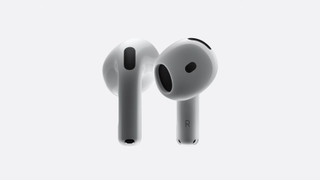
Apple's Glowtime event has been a massive show so far — and there's little more exciting than the brand-new AirPods models. First up are the AirPods 4, and they're looking like a big update. There's a new design, for one, which Apple has refined with "50 million data points" for the most comfortable AirPods ever.
There's an H2 chip on board as well, which we're told will make the AirPods sound better than ever — and give you Spatial Audio. You can even nod your head yes and shake your head no to make them truly hands-free — which is great if you've got your hands full with shopping.
Force touch is on the base model as well, and you'll get a USB-C port on the bottom of the case. You'll get 30 hours of battery life too.
There are two new AirPods 4
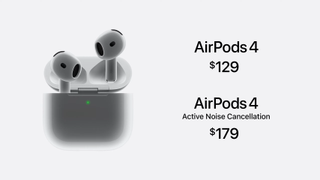
There's a more premium option as well, featuring noise canceling. Transparency mode is on board too — and adaptive audio and conversation awareness. This begs the question: Why buy the AirPods Pro 2?
The AirPods 4 with noise canceling are going to cost $179, while the more budget model are going to cost $129.
There are AirPods Max as well
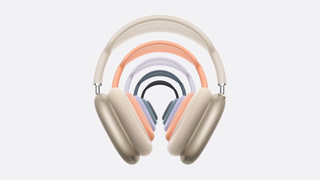
The AirPods Max refresh is a much lighter update, with some new colors and a USB-C port. The new colors are in the form of Midnight, Blue, Purple, Orange, and Starlight, replacing the current lineup of color options. Beyond that, it's looking like we're not going to get too much in the way of new features or upgrades.
That's disappointing, Apple.
Sign up now to get the best Black Friday deals!
Discover the hottest deals, best product picks and the latest tech news from our experts at Tom’s Guide.
AirPods Pro 2 getting some new features
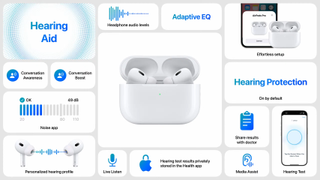
We're getting some new health features for the AirPods Pro 2 as well, so that you don't damage your hearing when listening to your music. First up is hearing protection, which is designed to make sure that your music isn't too loud so that you don't destroy your ears when you blast "Break Stuff". Then there's the hearing test, which will monitor your hearing health, so that you can see how your ears are looking over time. Finally, hearing aid lets you hear your surroundings better, perfect if you've got light hearing problems.
Your hearing profile, made so that you can hear every bit of your music, will be applied when you listen to music, watch movies, or take a phone call. These new features are coming to AirPods Pro 2 later this fall.
More from Tom's Guide
- Apple AirPods 4: Everything we know so far
- AirPods 4 — these are the upgrades we want to see
- Two AirPods 4 models launching at Apple 'Glowtime' event — here's ...
Tammy and her generous collection of headphones have found a new home — Tom's Guide! After a two-and-a-half-year stint as iMore's resident audiophile, Tammy's reviews and buying guide expertise have more focus than ever on Tom's Guide, helping buyers find the audio gear that works best for them. Tammy has worked with some of the most desirable audio brands on the planet in her time writing about headphones, speakers, and more, bringing a consumer focussed approach to critique and buying advice. Away from her desk, you'll probably find her in the countryside writing (extremely bad) poetry, or putting her screenwriting Masters to good use creating screenplays that'll never see the light of day.
Best Black Friday running headphones deals — 8 sales on our favorite running buds from $19
Noble just announced the most stunning earbuds we've ever seen — and they have 5 drivers
Everyone is telling me to get a VPN – should I?
Most Popular
- 2 This Samsung washing machine is the best thing I bought in 2024 — and now it's $305 off for Black Friday
- 3 5 common Christmas tree mistakes that could shorten the lifespan of your tree
- 4 New on Peacock in December 2024 — all the movies and shows to watch
- 5 Forget the gym — this 20-minute workout builds full-body muscle and boosts your metabolism with just 2 dumbbells

IMAGES
VIDEO
COMMENTS
Apple announced an industry-defining design for AirPods 4, five new AirPods Max colors, and a hearing health experience with AirPods Pro 2.
AirPods deliver an unparalleled wireless headphone experience, from magical setup to high-quality sound. Available with free engraving.
The new AirPods use computational audio to bring the breakthrough experiences that customers love on AirPods Pro and AirPods Max — like Adaptive EQ and spatial audio with dynamic head tracking — to even more people.
The H2-powered AirPods Pro feature Adaptive Audio, seamlessly blending Active Noise Cancellation with Transparency mode to deliver the best listening experience for any environment. (1) When...
What's brand new Apple AirPods by tech giant Apple Revolution in wireless ear pods Get ready to get rid annoying tangling headsets. All powered by Apple designed W1 chip . Worlds first of its kind. Apple AirPods . - Download as a PDF or view online for free.
Apple on Monday announced two new versions of the AirPods 4 with an updated design and new features. As a result, the company is also discontinuing some of its older AirPods. Read on as we...
For the full audio experience, those using Apple’s upcoming spatial computing headset should bring along the new AirPods Pro for ultra low latency lossless audio.
There's a new design, for one, which Apple has refined with "50 million data points" for the most comfortable AirPods ever. There's an H2 chip on board as well, which we're told will make the...
The AirPods change forever how you use headphones. When you take your AirPods out of the charging case, they turn on and connect to your iPhone, iPad, Mac, or Apple Watch. Audio plays automatically when you have it in your ear, and pauses when you pick it up.
Here are five things the AirPods Pro do better than any other wireless earbuds. The AirPods Pro 2 are our favorite Apple earbuds, offering stellar noise cancellation, great sound quality and...